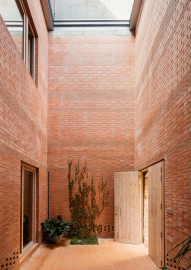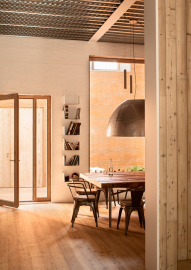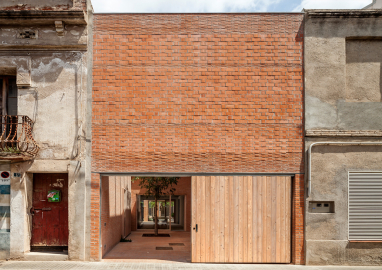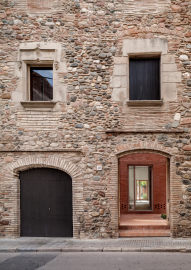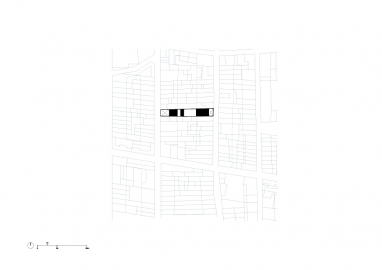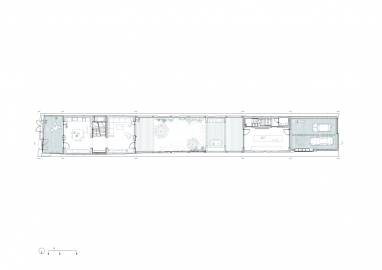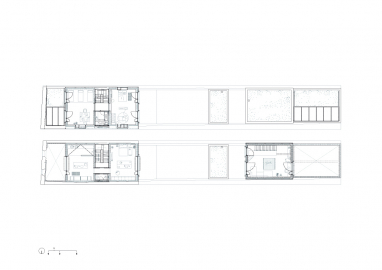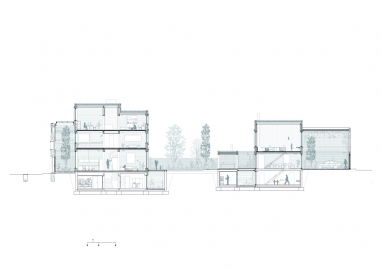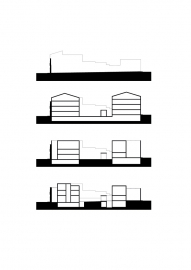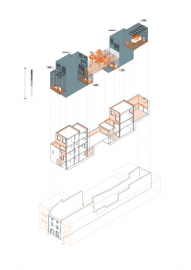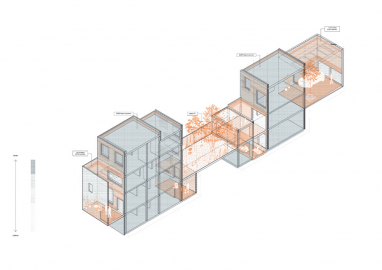House 1014
The house is located in the historical city centre of Granollers and placed into an urban fabric of dwellings between party walls. The available space is narrow and elongated and accessible from two streets. Owing to the dilapidated state of the existing building, only the main façade could be maintained.
The house is located in the historical city centre of Granollers and placed into an urban fabric of dwellings between party walls. The available space is narrow and elongated and accessible from two streets. Owing to the dilapidated state of the existing building, only the main façade could be maintained.
The desire of the owners was to differentiate two zones: the domestic area, where the daily family life had to take place; and a secondary area, quite and isolated, functionally independent to be used as a living room or to welcome occasional guests as well as organizing meals and gatherings. According to planning regulation in street alignment the partition in two areas along the plot appears automatically. The domestic area is placed towards the main street, while the west side isolated and separated by the central garden, becomes a segregated zone for vehicle access.
The east-west orientation of the house and the narrowness of the access streets made it difficult to achieve a good solar gain. This circumstance, added to the difficulties to achieve privacy in the ground floor, led us to move back the building from the front street line, creating access patios both sides of the house. These patios allow upper solar gain and at the same time create transition spaces. The qualities of privacy, light, space and thermal comfort of these spaces allow the house to be used and perceived from end to end. These bioclimatic spaces become the first step of a sequence of areas linking one street to the other offering all along a great variety of conditions, characteristics and properties clearly differentiated among themselves. The addition of this sequence of spaces and thermal conditions creates a ground floor 53 m long totaling 345 m² dedicated to the most frequent and collective use of the house. It works at the same time as a long continuous hallway, giving access to the private and service areas of the house located in the upper floor and the basement, respectively.
The organization, based on sequenced spaces, is totally related to the structural system of the house, opting consequently for a walling system that materially reinforces the typology of the house. Load bearing walls embrace every space limiting both the size as well as the proportion of the openings between spaces in such a way that the structure drastically conditions the experience and perceptions while in the house. Variety of ceramic materials, different skin textures, walls thickness and the capacity for self regulation of humidity and thermal inertia are experiences identifying every space typology. Space is the structure and the structure configures the space.
Relationship between different structural units produces discontinuities that need to be solved, becoming as an opportunity to organize brick masonry and creating post-compressed beams where solid brick layers will be reinforced. Load bearing walls are stratified in strips between ledges and lintels creating a gradient of densities from the thinner and more solid pieces in the ground floor, to the thicker and perforated pieces of the upper floors.

